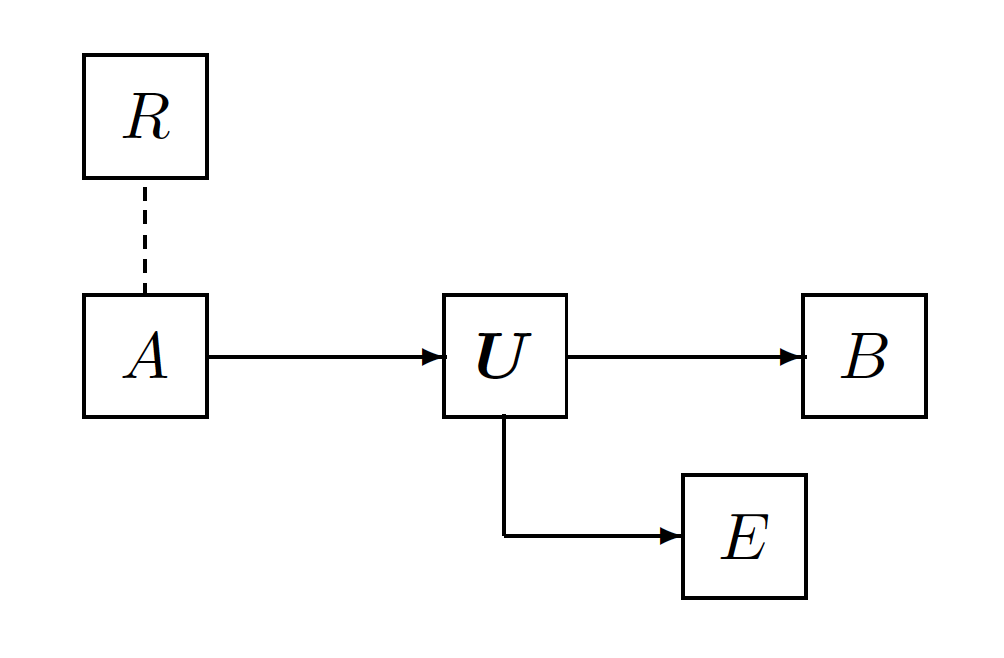关于量子信息的经典讲义。
1. From Classical Shannon Entropy to Von Neumann Entropy
Classical Shannon Entropy:
Quantum Von Neumann Entropy:
- Relation: if
are orthogonal to each other, then the entropy equals to the corresponding classical entropy. .
: majorizes . is at least as random as . That means for a doubly stochastic matrix . - Doubly stochastic matrix: A square matrix of nonnegative real numbers, with each rows and columns sums to 1.
Schur concavity:
and , if , then . For
that realizes , we have , then . Quantum entropy is less than or equal to the corresponding classical entropy. The equality holds when all the are orthogonal.
Project
Here
- Mathematically: for a nondiagonal and nonnegative Hermitian matrix, the diagonal elements are more random than the eigenvalues.
From Pure States to Mixed States
Entanglement Concentration and Dilution
Concentration: From
Dilution: From maximally entangled states prepare
Asymptotically,
- Entanglement cost
: create many copies of by consuming pairs of Bell states. “Entanglement dilution” - Distillable entanglement
: convert many copies of to Bell pairs. “Entanglement concentration” - $E{D}(|\psi\rangle) \leq E{C}(|\psi\rangle)$, for bipartite pure states the equality holds.
- For pure states, $EC(|\psi\rangle{AB}) = ED(|\psi\rangle{AB}) = H(\rho_A) = H(\rho_B)$.
Quantify Mixed-state Entanglement
With only LOCC the dilution of mixed states is irreversible. However, if all bipartite operations that are incapable of creating entanglement (these operations include LOCC as well as some other operations) are included, the dilution and concentration of mixed states become asymptotically reversible again. (Related to quantum source theory.)
Accessible Information
Alice sends the information with a quantum ensemble
The information gain of Bob is represented by the change of Von Neumann entropy before and after the measurement. That is the mutual information:
Bob’s optimal choice of
If the states in the ensemble are orthogonal and Bob has chosen the projectors to the basis, then
- Holevo bound:
. - Monotonity of Holevo bound: If
is a quantum channel, then and therfore .
Classical capacity of a channel: can be expressed in terms of the optimal correlation between input and output for a single use of the channel,
.
Quantum channel capacity and Decoupling
The quantum capacity of a quantum channel is still a work in progress. Supose Alice prepare the state
We say that
The quantum channel capacity
Coherent information
There is a regularized formula of
For any channel

Stinespring dilation: Any channel
has an isometric extension, the Stinespring dilation . We can obtain by tracing out the enviornment from . Since the unitary does not change the eigenvalues of the density matrix, the entropy of is preserved: . However the channel may not preserves the entropy. This dilation could be considered as the purification of a quantum channel.
We then define the one-shot quantum capacity of the channel:
The max is taken over all possible $\rhoA
where:
So asymptotically the quantum channel capacity is:
where the input state
If the coherent information is subadditive, then
The decoupling principle
Quantum data-processing inequality: A quantum channel cannot increase the coherent information:
Suppose
then we can derive:
Now consider the situation of error correction codes. Two channels acting in succession on the code state $\rhoA
The process is depicted in the graph:

With perfect decoding Bob gets the state in
According to the quantum data-processing inequality, for the intermediate state in $RBE,
This means the state is separable between
This implies that purified quantum information transmitted through the noisy channel is exactly correctable if and only if the reference system is completely uncorrelated with the channel’s environment, or decoupled from the environment. This is the decoupling principle.
Now we have: exact correctability corresponds to exact decoupling. Further we can likewise see that approximate correctability corresponds to approximate decoupling.
For example
norm: .
Fidelity written innorm: .
Next we provr that if these two density operators are close in
Any purification of
So the fidelity of them:
And with the following conditions:
- Fidelity is monotonic, both under tracing out
and under decoding map. could be decoded perfectly.
We can conclude that:
Thus approximate decoupling in the L1 norm implies high-fidelity correctability.